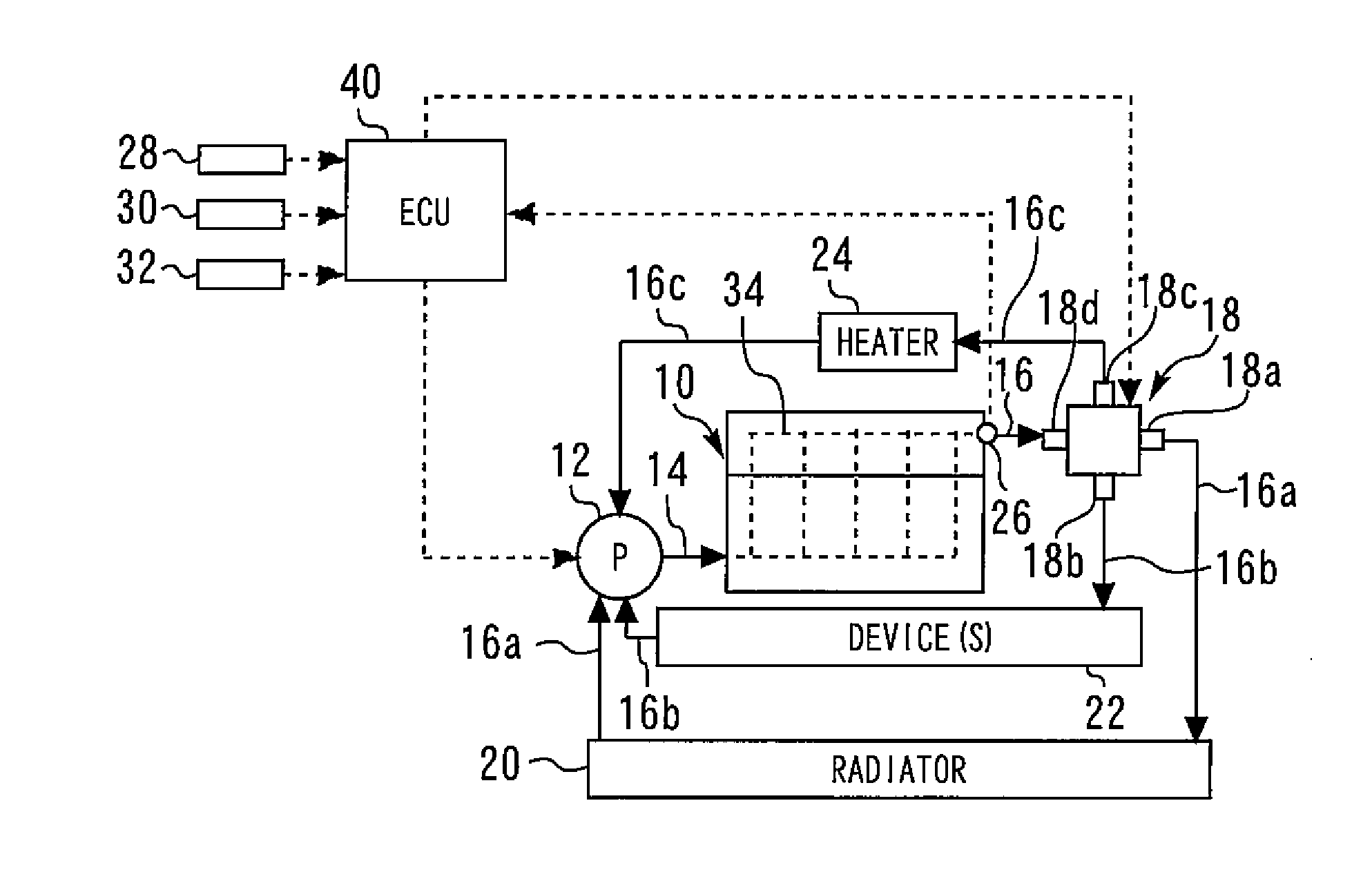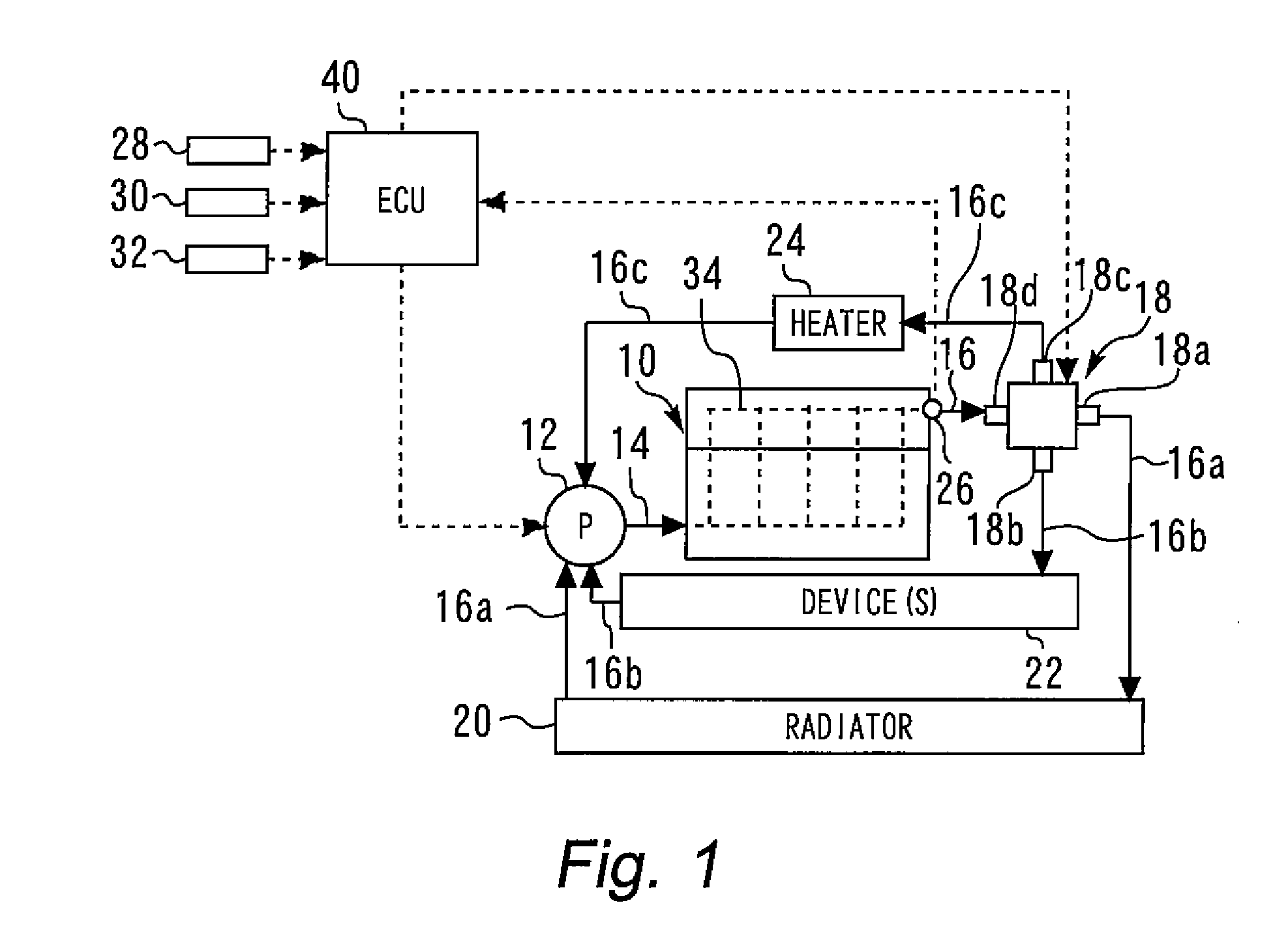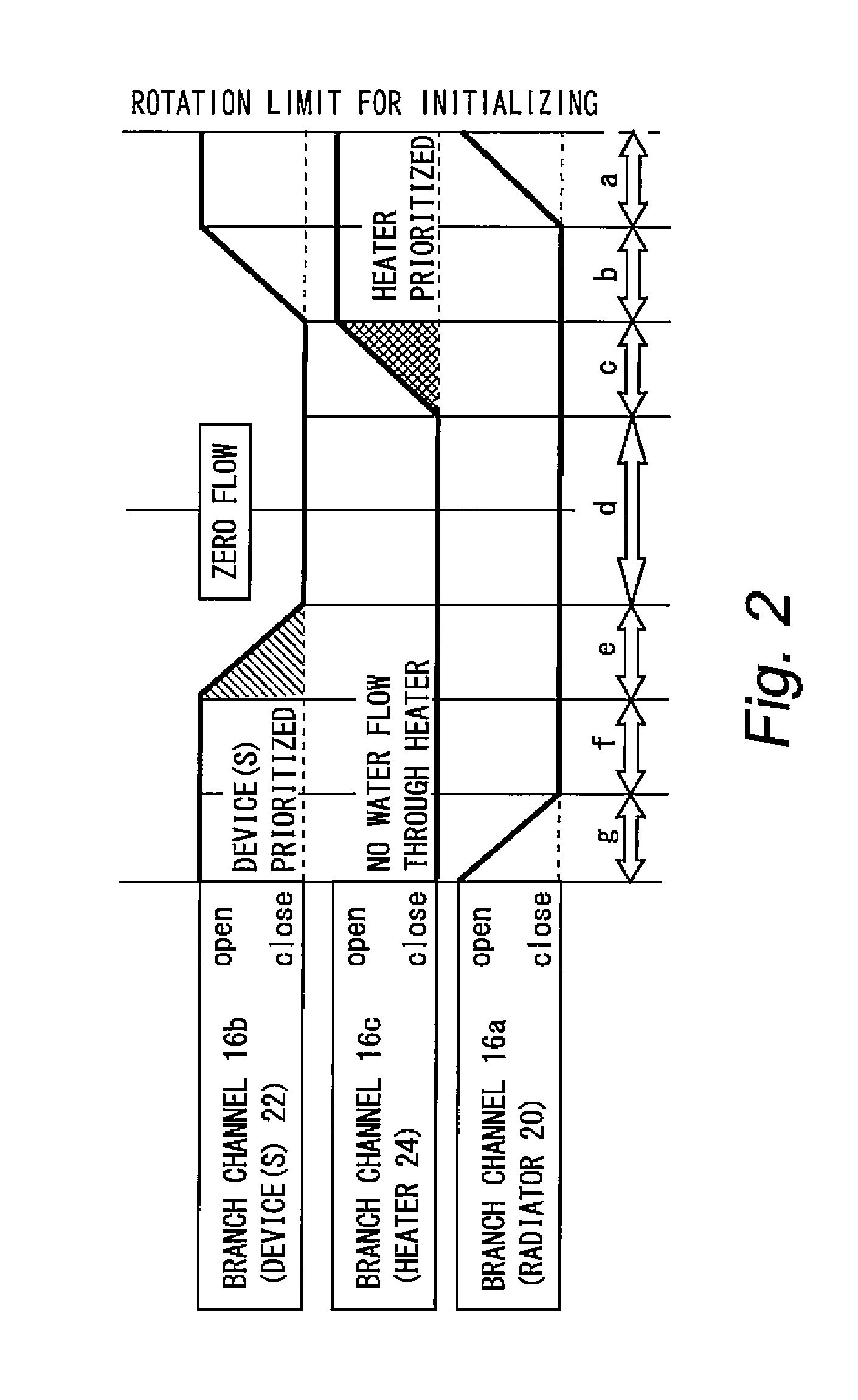Cooling apparatus for internal combustion engine
a technology for internal combustion engines and cooling apparatuses, which is applied in mechanical apparatus, machines/engines, engine starters, etc., can solve the problems of controllability deterioration of cooling apparatuses, and suppress the deterioration of cooling apparatus controllability when the internal combustion engine is restarted
- Summary
- Abstract
- Description
- Claims
- Application Information
AI Technical Summary
Benefits of technology
Problems solved by technology
Method used
Image
Examples
first embodiment
(Characteristic Operations in First Embodiment)
[0069]According to the valve control using the multifunction valve 18, since it is possible to perform the temperature control or the warm-up control simultaneously with the auxiliary equipment control, it is possible to achieve compatibility between engine performance and performance of auxiliary equipment such as air-conditioning equipment. However, the following problem exists with regard to the valve control using the multifunction valve 18 when stopping the engine 10. That is, according to the normal engine stopping in which the ignition is turned off by the driver and the engine is completely stopped, the position of the rotation angle of the rotor of the multifunction valve 18 is caused to move to the reference position by the above-described normal engine stopping-time control. However, if the aforementioned normal engine stopping-time control is performed during the short-time engine stopping in which the ignition is kept turne...
second embodiment
(Features of Second Embodiment)
[0085]In the cooling apparatus of the first embodiment that is described above, as optimal control of the multifunction valve 18 during short-time engine stopping, the operation control that is being executed at the time of the short-time engine stopping is continued. During a period in which warm-up control is being performed, the branch channel 16a is controlled to constantly be a fixed opening degree (fully closed). Further, since warming up does not proceed while engine stopping is being performed, a particular problem does not arise even if the opening degree of the branch channel 16a during short-time engine stopping is retained in the state thereof (that is, fully closed) immediately prior to performing the short-time engine stopping.
[0086]Therefore, according to a cooling apparatus of the second embodiment, a configuration is adopted that, where warm-up control is being performed as the operating-time control during short-time engine stopping, ...
PUM
 Login to View More
Login to View More Abstract
Description
Claims
Application Information
 Login to View More
Login to View More - R&D
- Intellectual Property
- Life Sciences
- Materials
- Tech Scout
- Unparalleled Data Quality
- Higher Quality Content
- 60% Fewer Hallucinations
Browse by: Latest US Patents, China's latest patents, Technical Efficacy Thesaurus, Application Domain, Technology Topic, Popular Technical Reports.
© 2025 PatSnap. All rights reserved.Legal|Privacy policy|Modern Slavery Act Transparency Statement|Sitemap|About US| Contact US: help@patsnap.com



